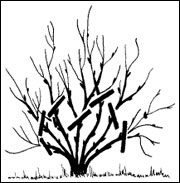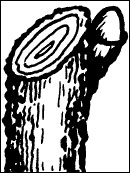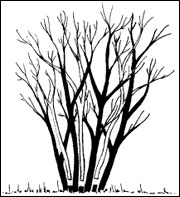|
Pruning Tips When to prune is mostly a matter of convenience. We have pruned both in the fall and early spring and had good results either way. It does seem that the later and the more harshly you prune that fewer flower blooms can be expected the next season. This is because most hydrangeas bloom on "old" wood. With young plants, be sure to prune enough growth to form them into a good "shape” and no more. This is generally 10 to 20 percent of the growth. Unlike many of your other flowering bushes (roses and buddleia), hydrangeas should not be harshly pruned in the spring. Most hydrangea varieties bloom on old wood and if you cut too much, you won’t get any blooms. We recommend fall pruning after blooming is done. For us here in the Pacific Northwest, that means October. This allows for some active growth before the plant goes dormant. If you miss fall pruning, you can still prune in the spring. Once your plant starts to leaf out and your last hard frost is about two weeks past, you can see the leaf nodes beginning to form. Count back from the end of the plant such that you have at least three fat and healthy leaf nodes forming. Prune right above the third one. You may want to wait until leaves are starting to show before you prune your macrophyllas so you don’t prune too much. The Paniculata and Arborescens varieties bloom on new wood so you may cut them for size every year, spring or fall, whatever is most convenient for you. More Pruning Tips Newly planted hydrangeas need not be pruned except to shape into a shrub. Once established, hydrangeas can be pruned more severely to maintain height as described below. You may prune in the fall after blooming or in the spring after the hard frosts are over. Remember, the later you prune and the more drastically you prune, the fewer blooms you'll have. Prune to the first leaf node of this year's growth as shown in Figure 1.  Figure 1 Cut 1/2" to 1" above a budding node at a 45 degree angle as shown in Figure 2. These buds will be the new leaves and blooms of your hydrangea. If you live in an area that is prone to spring frost, protect these buds with bed sheets or frost cloth (a light felt) on nights that frost is expected.  2 2Figure 2 Established hydrangeas tend to have branches that die back every year. These are completely woody branches inside the hydrangea. Cut up to a dozen of these branches down to the ground as shown in Figure 3 to spur new growth at the base.  Figure 3 |